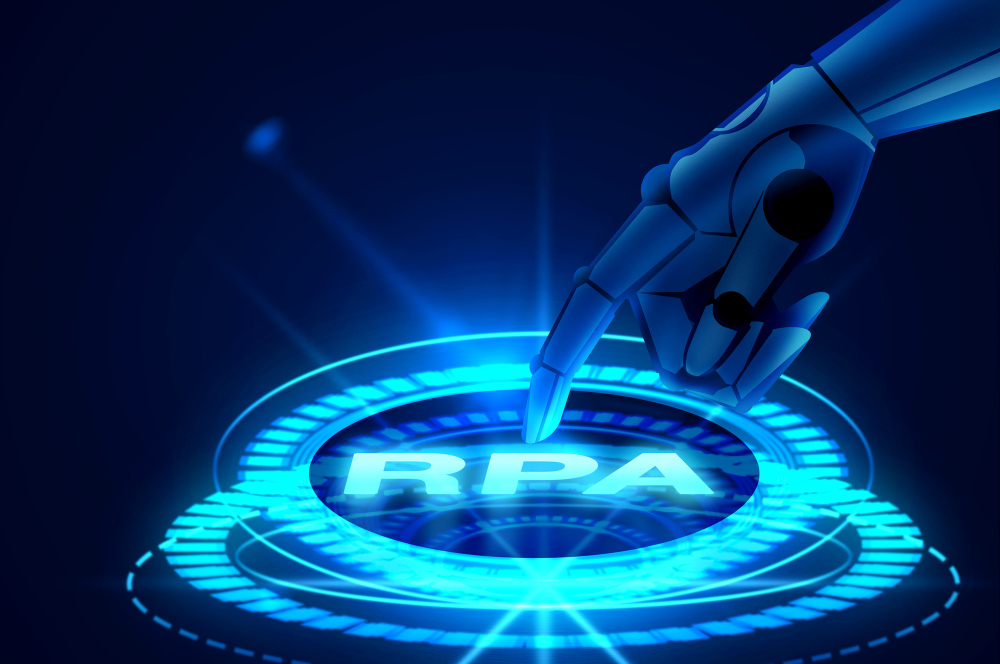In the current era of rapid technological innovation, Robotic Process Automation, also known as RPA, is reshaping business efficiency. In this article, we will dive deep into RPA technology, exploring its influence on the automation of operational activities which in turn optimizes productivity and free up human resources for more strategic value-added tasks.
Unveiling RPA Technology
Robotic Process Automation (RPA) is an innovative solution that employs software robots to execute scalable and repetitive operational tasks. These “virtual robots” mimic human actions, seamlessly integrating processes and activities in a non-intrusive and easily reversible manner.
Expanding the Horizon of Efficiency
Imagine a scenario in which the time spent on routine and repetitive tasks, which voraciously consumes valuable company resources, is drastically reduced. RPA offers precisely this. In many organizations, up to 80% of resources are absorbed by operational tasks that could be easily automated. By unleashing this digital workforce, companies can strategically deploy their human talents on activities that generate a substantial impact.
The Value of RPA in Action
The implementation of RPA brings a host of tangible advantages, from minimizing errors to executing tasks at impressive speeds. RPA robots are meticulously programmed to perform complex sequences of actions, such as keystrokes, data transfers, and transaction execution. This results in more efficient and precise workflows.

Embracing Successful Automation
To fully realize the benefits that RPA offers, it is essential to avoid common pitfalls and follow best practices. Let’s examine four common mistakes and then highlight successful strategies for effective RPA implementation.
- Engaged Leadership
The engagement of leadership is crucial to the success of RPA. Business leaders must be involved from the outset, providing guidance and overcoming unexpected challenges.
- User Empowerment
Users are the ones with an intimate understanding of the intricacies of tasks. Therefore, it is crucial that users themselves guide the development team that will program the robots ensuring effectiveness and relevance in the automation process.Throughout the whole process you can always count on Dominium’s assistance whenever needed!
- Strategic Process Selection
Automation should focus on key processes that add substantial value, avoiding the temptation to automate irrelevant tasks.
- Holistic View of RPA
RPA is not merely a cost-cutting tool. It is part of a larger strategy that harmoniously combines technology, processes, and human expertise.
Mastery in RPA Implementation
Let’s explore the practical steps required to successfully integrate RPA into your daily workflow:
Identification of Opportunities
Begin by meticulously mapping out processes and identifying suitable activities for automation, considering standardization, business rules, and volume.
Vendor Selection
Carefully evaluate potential vendors, examining their technical specifications, functionalities, and support services, ensuring that the chosen vendor aligns seamlessly with your unique requirements.
Proof of Concept (POC)
Executing a Proof of Concept (POC) is a pivotal step in the journey to test the viability of the solution in a real-world setting. This phase also involves training users to maximize the inherent potential of RPA.
Implementation and Monitoring
Post-validation of the POC, the solution is ready for full-scale deployment. This phase involves ongoing monitoring and fine-tuning of the robot for sustainable lasting results.
Expanding Automation Horizons with RPA
The versatility of RPA makes it applicable in various areas, infusing efficiency into even the most complex processes. Some examples include:
- Invoice processing
- Billing Automation
- Report generation
- Order and production management
- Customer service automation
- And much more
Heading Towards Digital Transformation
The era of Digital Transformation urges us to embrace innovative technologies like RPA. By streamlining processes and liberating human resources to focus on strategic tasks, companies position themselves for the agility and competitiveness demanded by the contemporary business landscape.
Distinguishing RPA from Artificial Intelligence
Understanding the fundamental distinction between RPA and Artificial Intelligence (AI) is essential. While RPA thrives in automating predefined tasks, AI empowers machines to acquire knowledge, reason, and make complex decisions.
The RPA tool is a meticulously engineered solution to boost business efficiency. Embracing RPA represents the initial step toward embracing high-level innovation and productivity, transforming operational processes and delivering tangible results.
Conclusion
RPA is a transformative force in optimizing business operations by automating routine tasks and freeing up resources for strategic initiatives. Its benefits include error reduction and task acceleration. To harness its potential, it is crucial to engage leadership, empower users, and strategically select processes. The adoption of RPA promotes innovation and efficiency, transforming operations and delivering tangible results. Dominium provides specialized assistance in this automation journey.
Automate Processes with Dominium
Contact Us



